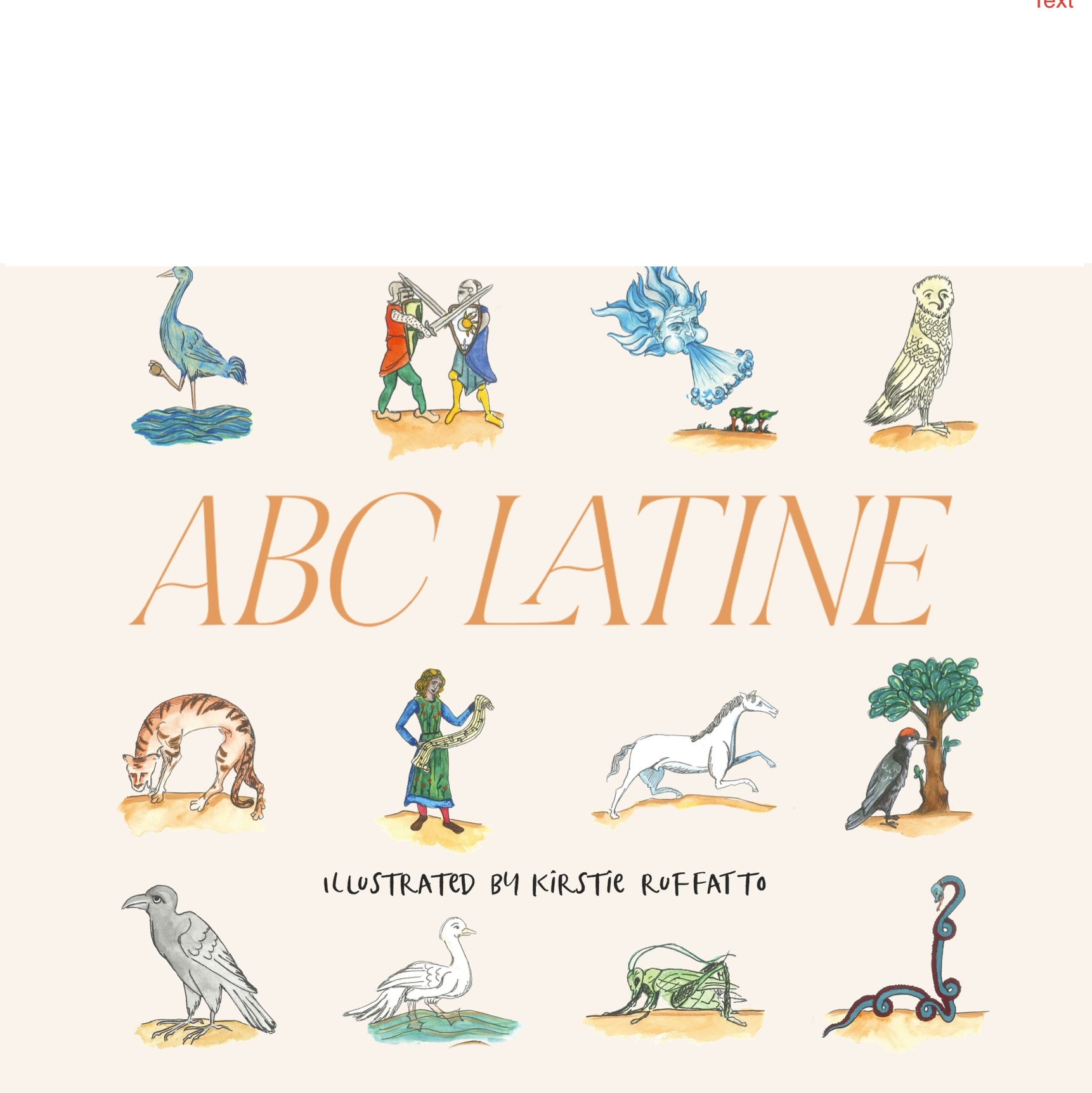Reading with Adelaide

One year ago, our first granddaughter, Adelaide, was born. Becoming a grandfather brought an unbelievable amount of joy and excitement that continues to the present. I have, admittedly, been waiting for this moment in life a long time, and it has not disappointed.
Also, one year ago, Circe published ABC Latine. One of the ideas behind the text came from my experience reading J. A. Comenius, a 17th century Hungarian, who wrote what may have been the first picture book for children, and it was in Latin. The book is called Orbis Sensualium Pictus and roughly translates as “The World in Pictures.” The opening chapter begins with a teacher calling a young student to learn wisdom. The boy asks, “What is this wisdom?” “To understand rightly, to act rightly, and to speak rightly,” responds the teacher. “How will I learn?” inquires the boy. The teacher promises to show him.
This point deserves some attention.
Comenius wrote this book to teach children the Latin language, and he does this by showing. Comenius believed that language should not be taught in isolation from its context. Words are references to things, or to actions, or to relationships. A word does not exist apart from what it signifies, and Comenius said that the best way to teach children the Latin language was to show them real objects while naming and describing the objects in their context. Thus, the Orbis Pictus leads the young student through 150 scenes on the topics of nature, animals, plants, the human body, occupations, education, virtues, society, transportation, war, leisure, and religion. Each chapter begins with a picture in which the objects are numbered. The adjoining text describes the picture by working through the numbers but does this as a narration so that the words are taught and learned in context. By the end of the book, the young student will have learned approximately 8,000 Latin words.
“First,” the teacher says, “you ought to learn the sounds of human speech. This the animals know how to make, and your tongue knows how to imitate.” From here, the teacher leads the boy through the alphabet noting the sounds made by each letter in reference to an animal making that sound.
This was one of the inspirations for The CiRCE Institute writing and publishing ABC Latine.
Seeing the first copies of ABC shortly before Christmas last year, I decided that Adelaide’s first gift from her papa would be a children’s Latin book. At 3 months old, she was not as impressed as her papa with the beautiful pictures and the sounds made by each animal. But one year later things have changed.
Over this year’s Thanksgiving holiday, Adelaide pulled ABC Latine off of her daddy’s bookshelf and handed me the book. Overcome by delight, I began thumbing through the pages and reading out loud, “Equus hinnit, neiggghh,” “Elephantus barrit, fffffff.” “Dad,” my daughter jumped in, “she really likes the turkey.” Quickly scrolling to the turkey, I read, “Gallopavus dicit, gobble gobble gobble.” Her eyes lit up and she ran off with joy. I, on the other hand, kept reading hoping to read all the sounds with Adelaide. Perhaps, we’ll make it through the whole book next Christmas.
If you would like to hear ABC Latine read and learn the sounds of the words, I have made a new recording, and we at CiRCE have posted it HERE.
If you have not yet acquired a copy to read to your children or grandchildren, consider making room on your bookshelf or putting it in a stocking this Christmas.
Buck Holler
Buck Holler is a former horse trainer and rodeo cowboy from Red Bluff, CA. Retiring from the rodeo circuit, Buck headed to New England to study theology and languages at Gordon-Conwell Theological Seminary in 2001. Since then he has worked as an educator and administrator in CA, New York City, and eastern NC. Buck first joined The CiRCE Institute as an apprentice in 2007, became a head mentor for the East Coast III apprenticeship in 2017, began the Latin Apprenticeship in 2019, and now serves in Concord, NC as CiRCE’s director of consulting.










